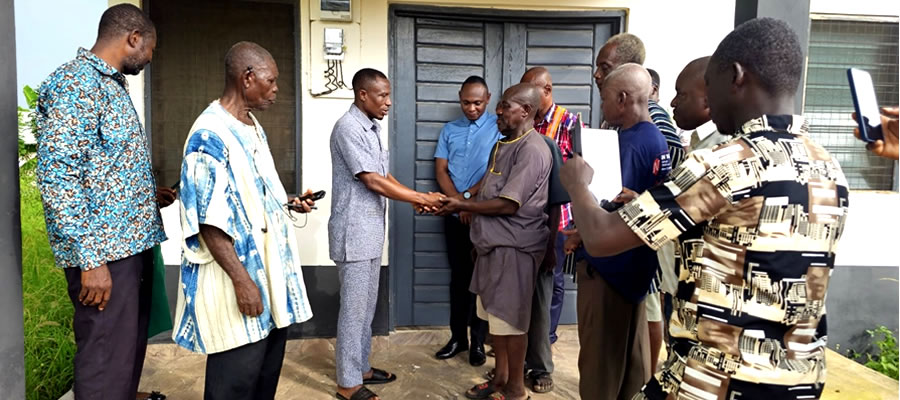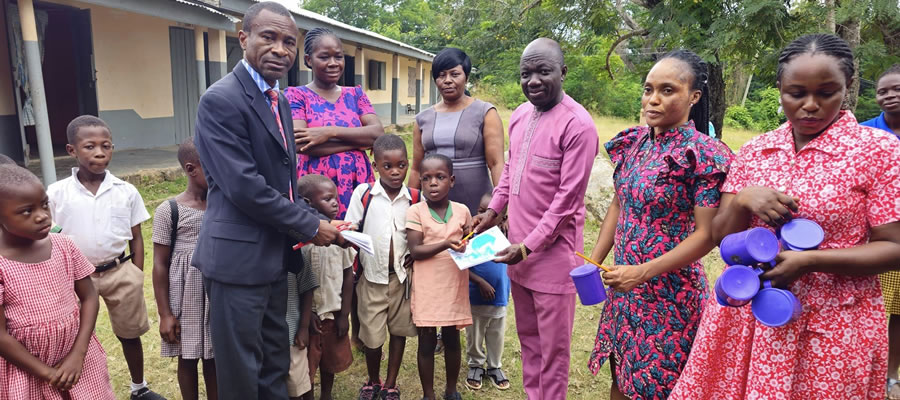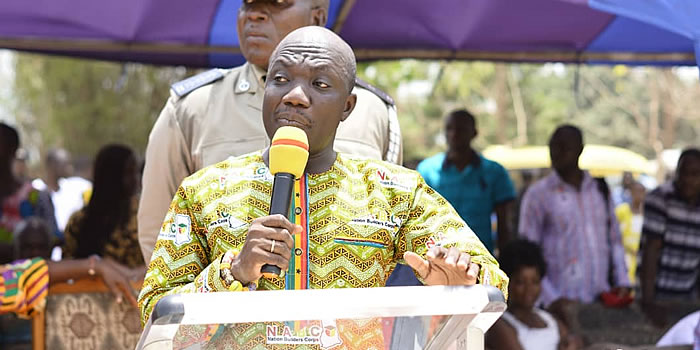

PEOPLE AND CULTURE OF THE DISTRICT
The people of the district are homogeneous in terms of tradition and culture. The indigenes are mainly Ewe-speaking people who originally migrated from Notsie in the 17th century, fleeing from the tyrannical rule of Togbe Agorkorli. This ancient town is located in the Republic of Togo.
Festivals
The Traditional Areas are united by some very important festivals and funds for implementation of most of the development projects are mobilized by the people during these festivals celebration. Most of these celebrations are characterized by music and dance which is dominated by the popular “Borbor”. The main festivals are Yam festival, Danyibakaka, Sasaduza and Awazorli.
Table 2.8 below is table that provides the detailed information of festivals in the district. Table 2.8:
Chieftaincy/Social Structure
The people of the district are organized under chiefs at lineage and settlement levels. A lineage comprises extended families that trace their genealogy to the same ancestors. The extended families have heads who are often the oldest male. Ownership of property is passed on by patrilineal inheritances.
The district is traditionally controlled by nine (9) Traditional Areas. These are namely: Anfoega, Aveme, Wusuta, Vakpo, Tsyome Sabadu, Botoku, Tsorxor, Awate, Tsrukpe. Basically, the traditional authorities administer stool and community land by holding them in trust for the people and arrange for the celebration of festival. They are also the custodian of traditional beliefs and customs. The traditional authority also have courts which adjudicate on matters relating to stool land, lineage and family land, chieftaincy title disputes, violation of traditions and disputes between localities, families and individuals.
Religion
The people in the district originally practiced traditional religion but its influence has since declined as a result of the expansion of Christianity. Christianity is the predominant religious belief among the population in the District forming about 95.9 percent, followed by Traditional with about 1.3 percent and Islam with about 0.8 percent. Also, other religion forms 0.8 percent whereas people who do not belong to any religion constitute about 1.2 percent of the population (2010 PHC).
Hospitality Industry
The hospitality industry has improved considerably with the development of hotels and Guest houses. Currently the main hotel and guest houses are, Yesu Ko Guest House at Anfoega, Island Guest House at Vakpo, Volta Valley Guest House at Vakpo Jordan-Nu, Town Lodge at Anfoega and Ken Royal Palace at Vakpo Todzi.
The major challenges impeding the development of a robust hospitality industry in the district include: the low private sector investment in the hospitality industry, weakness in resource sharing and the low political will.
Tourism
North Dayi District has the potentials to attract both domestic and international tourists. Unfortunately, the district lacks the much needed data on the sector such as data on travel motivation, tourism stopovers and documentary on the rich cultural and traditional festivals.
There are a number of impressive tourism potentials including natural environmental heritage, historical heritage, cultural heritage and other attractions. Among the natural attractions are the climate, mountains and other natural features and scenic beauty which together provide a broad base for the development of eco-tourism, recreation and various types of resorts.
Beach resorts at Tsorxor, Awate and Aveme
The Volta Lake is one of the man-made lakes that run through the district and provides an important attraction and potential for much more extensive boat cruises, recreation boating and fishing and development of lake shore resorts with recreational facilities for water sports and a confluence at Tsorxor.
Crocodile Cave
At Awate Todzi is a crocodile cave in the valley down from Todzi to Agame at a place called Dzongeme. The cave is under the custody of a fetish priest. Also in Awate are two mystical mountains which were believed to provide defense for the people in times of war. These mountains are the Awawortoe which serve as a hideout for women and other minors during wars and mountain Akpotoe is believed to harbour swarm of bees which act as combatants on battlefield.
A 345 Steps linking Anfoega Azigbe and Anfoega Agata and Agatanyigbe
This staircase was constructed by Chiefs and people of Agata and Agatanyigbe to enhance easy access to the two (2) towns from 1988 and completed in 1993. A walk on the steps gives a proper view of all the Aveme communities; Aveme Beme, Aveme Danyigba, Aveme Dzeme etc. Moreover, it provides a clear view of a section of the Volta Lake and the beautiful scenery of the forest.
Natural Bridge at Botoku
This is a natural collection of rocks which have provided a bridge over a stream called Kpen. It links Botoku to other surrounding villages. It is been used by vehicles of all kind.
Economy
Banking Services
Date Created : 4/4/2023 5:55:19 AM












 facebook
facebook
 twitter
twitter
 Youtube
Youtube
 +233 593 831 280
+233 593 831 280 0800 430 430
0800 430 430 GPS: GE-231-4383
GPS: GE-231-4383 info@ghanadistricts.com
info@ghanadistricts.com Box GP1044, Accra, Ghana
Box GP1044, Accra, Ghana